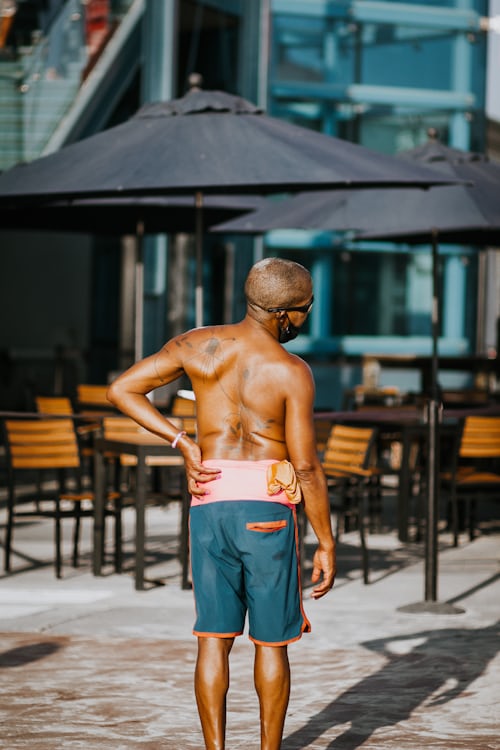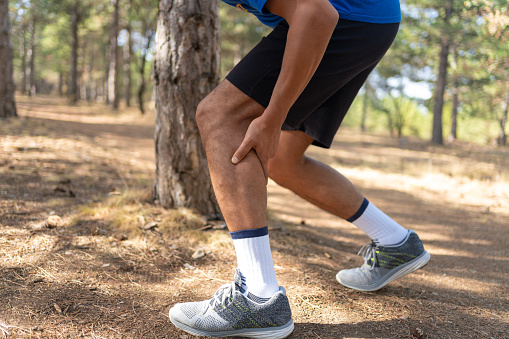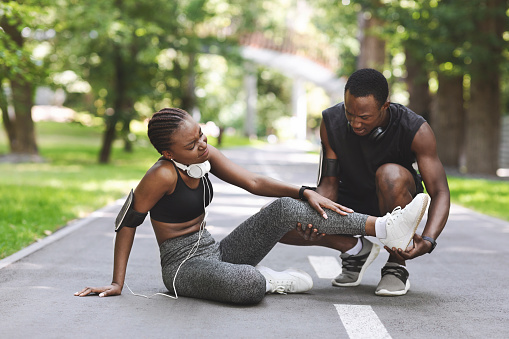Working out is the best way to stay in shape and maintain your health. However, there are a number of different types of injuries that can happen during your workout.
Injuries can range from minor strains that will go away after a day or two with rest, to more severe ones that require surgery. This post will help you understand what causes these workout injuries, how they can be prevented, and treatment options.
1.Runner’s Knee
Runner’s knee is one of the most common running-related ailments that affects runners. According to Temple Health, at least 25% of male athletes and 30% of female athletes suffer from this condition.
It happens when there’s irritation to the cartilage under our kneecap. This can be caused by an out-of-alignment knee cap, which causes pain while climbing stairs or sitting bent over for too long.
Prevention
To prevent Runner’s Knee, keep weight off the knee and avoid kneeling or squatting repeatedly. Elevate your feet when sitting so that blood flow stays at a healthy level.
Switching up surfaces you run on can help too and don’t forget about switching shoes. Wearing cushioned footwear will also go a long way towards keeping things feeling good down there while not adding any additional pressure points.
Treatment
Runner’s knee may be a nagging issue for some people, but there are many treatments that can help alleviate the pain. Putting ice packs on your knees for 20-30 minutes every 3 hours and taking an anti-inflammatory drug like Advil or Motrin will reduce swelling and alleviate pain.
Stretching exercises could also strengthen muscles around glutes, hips, and quads, but severe cases may require surgery to correct the knee cap position.
2. Lower Back Pain
Cycling is a great way to get fit, and the best part about it? You can do your workout at home. But if you’re not careful there are still risks that could make biking less appealing than ever before.

Lower back pain from cycling mainly comes down to two things: long hours in an aggressive riding position with the flexed spine while pedaling, and repetitive use.
When there is excessive flexion, cyclists may suffer from sciatica, herniated lumbar discs, or nerve entrapment causing their muscles to weaken. As a result, they may experience lower back pain as the supporting muscles try to compensate for the weak muscles.
Prevention
To prevent lower back pain while cycling, a proper bike setup is key. If you have an oversized frame or are hunching over too much it will be difficult to support your weight. A proper bike frame size ensures comfort and prevents back pain.
Don’t forget core-strengthening exercises. A great exercise routine would also involve strengthening muscles around joints through core exercises so that you’re able to hold on tight without slumping.
Treatment
One way to treat it would be by putting an end, or at least enough time for your injured tissues and nerve roots to heal themselves before you resume all activities- especially cycling. You can also use heat packs as well as prescription medicines that help with both inflammation and pain.
If severe, it’s recommended to seek help from a physical therapist.
3. Joint Dislocation
When joints are impacted unexpectedly or unbalanced, a bone can slip out of its normal position. It causes loss in motion and pain during movement as well as numbness or tingling sensations that will unfortunately not go away with time.
Prevention
Workout injuries happen when people don’t take the proper precautions to prevent them. The best way to prevent a joint is to wear protective gear or clothing while doing exercises. Make sure you have replaced any rugs with non-skid material or wearing non-skid shoes to avoid slipping.
While working out at the gym, avoid lifting weights that are too heavy for you and alternate different exercises.
Treatment
Joint dislocations can be a traumatic experience, but fortunately, there is usually no long-term damage if you receive immediate treatment from an expert in this field. Icing and compression wraps should help ease your pain, and you can also use painkillers and muscle relaxants.
Your doctor may recommend that you wear a sling, cast, or splint to reduce joint movement and help reposition the joint.
4. Muscle Pull
Muscle pulls can happen as a result of overusing or improper use. The most common type, which causes damage to muscle fibers and tendons in addition to blood vessels on the surface near where they attach, is called “a strain.” A severe enough pull will cause swelling along with weakness throughout the affected area(s).

A less serious injury involving only localized bruising may occur when you exert yourself with excessive fatigue.
Prevention
Stretching before you play a sport can help prevent muscle pulls. It increases the blood flow and decreases the risk of injury. Avoid painful activities that put a strain on your muscles.
Treatment
When you have a muscle pull, the initial treatment includes icing and stretching of your strained muscles. Heat can also be used to relieve pain after swelling has reduced. Anti-inflammatory medication such as Ibuprofen or Ecotrin comes in handy to help relieve pain and enable motion. Keep the affected area elevated and use a bandage for support and to reduce inflammation.
5. Ankle Sprain
An ankle sprain is a surprisingly common injury, but it’s not something you should take lightly. High-impact activities like dancing or playing soccer can cause this type of sprain if your foot lands suddenly with no time for shock absorption and rapid movement causes many ligaments to stretch beyond their limits resulting in severe pain.

Symptoms include tenderness, swelling, and pain.
Prevention
A dance workout can be deadly if you don’t properly prepare for it. Warming up and wearing the appropriate footwear is key, but so is stretching.
Strengthen those ankles with strength training exercises such as squats and balance work like lunges.
Treatment
If you have sprained your ankle, it’s important to keep the area treated with ice and elevated for relief. For mild cases where there is initial swelling but no ligament damage, rest and medication like painkillers will help reduce any discomfort caused.
In severe cases, where the ligament is torn, reconstructive surgery may be performed.
You may also want to check out Medicinal Plants For Camping and Hiking Wounds
Conclusion
Running, backpacking and other physical activities can lead to injury. Fortunately, one way of preventing these workout injuries is by strengthening the muscles that support your joints in order to avoid over-using them.
You should also concentrate on improving flexibility so you don’t strain ligaments when stretching or shifting positions too quickly. If you are feeling pain during activity or afterward, try resting for a day before trying again with less intensity.
Remember that your body needs rest and recovery after strenuous physical activity as well as proper nutrition in order for the muscles and joints to heal properly. The more knowledgeable about workout injuries you are, the better prepared you will be to prevent and treat them

Pingback: What Is Pool Therapy Good for? - Hunters Articlopedia
Pingback: How to Tell if a Ring Is Too Big - Hunters Articlopedia